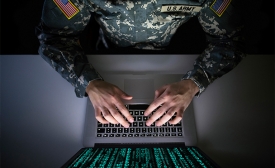defense

The dynamism of today’s global information environment underscores an essential role of strategic communication for government agencies with international concerns, including the military. Although the U.S. Department of Defense established Cyber Command and encouraged the armed forces to expand their Information Operations capabilities, the military culture continues to look at the information domain as a sphere to influence only during hostilities. So what does information capability mean in this context? How should the efforts be aligned with the other agencies and partners?

U.S. Foreign Service Officer (PD) Ronald E. Hawkins Jr. provides recommendations for national security.
According to reports from the Brazilian Army’s Social Communication Center (CCOMSEx), CBEMs are military diplomacy tools for the alliance between partner nations. “International understandings and commitments support the geopolitical needs of both countries’ interests,” CCOMSEx explained to Diálogo. [...] “Brazilian and U.S. service personnel can expand partnerships for exchanging defense products from both armies and for planning and executing maneuvers in the areas of logistics, intelligence, communications, cybernetics, and command and control,” said CCOMSEx.
Since the Bush administration created the doctrine of the three D’s — Defense, Diplomacy and Development — after 9/11, diplomacy and development have often been conflated as part of policy-makers arsenal of soft power tools. Confusing the two very distinct, but equally important, disciplines does a disservice to both and has often compromised their effectiveness.

This week's PD News roundup looks at the use of technology in public diplomacy
It is easy to think of defence spending as building tanks, but it is also the optical equipment and computer technology that makes them work and which ends up having a commercial economic benefit. It can also fund innovative, scientific and other research, often at universities, that might not otherwise take place. That being said, there is no shortage of global economic innovation now, outside of defence, in areas such as stem cells, robotics, 3D printing or green technology.







